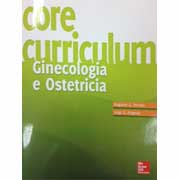253. A PHASE II STUDY OF IRINOTECAN AND CISPLATINUM AS NEOADJUVANT TREATMENT IN PATIENTS WITH LOCALLY ADVANCED CERVICAL CANCER
F.Raspagliesi, A.Ditto, L.Selvaggi, L.Frigerio, M.Melpignano, S.Mancuso,N. Donadello,S.Tateo,G.Giardina,S.Pignata,P.Scollo,M.Marinaccio,F.Zanaboni,G. Scibilia,G.Cormio,M.Presti,P.Benedetti-Panici
Aims: To evaluate efficacy and safety of a neoadjuvant treatment (NACT) with irinotecan and cisplatin in patients with locally advanced cervical cancer (LACC).
Patients and methods: Between February 2000 and December 2002, 87 patients with LACC were enrolled in13 Italian centers in a phase II study on NACT with irinotecan 175 mg/m2 on d1 q3 weeks followed by CDDP 80 mg/m2. Each patient was to receive 3 cycles of treatment. Tumor response was to be evaluated by MRI 3 weeks after the end of the third cycle. At the end of 3 cycles therapy, all patients were to be evaluated for radical surgery.
Results: Nine of the 71 patients analyzed (12.7%) showed a complete response and 43
(60.6%) a partial response for an overall response rate of 73.2% (95%C.I 61.4-83.1%). The overall response rate measured in the “per protocol” population was 76.9% (95%C.I 64.8- 86.5%). Complete pathological responses were observed in 13.6% of the patients (95%C.I 7.0-23.0%). Overall survival at 4 year was 87.0% (95%C.I 79.5-94.5%). A total of cycles 205 were administered. There were no study related death. Most common adverse events were: alopecia 76 patients (87.4%), and gastrointestinal disorders 79 patients(90.8%). Serious adverse events were: vomiting 18 patients (20.7%), nausea 14 (16.1%),diarrhea 8 (9.2%), neutropenia 50 (57.5%). A total of 3 patients (3.4%) were discontinued from the study due to the occurrence of one or more SAE.
Conclusions: Irinotecan and cisplatin showed a promising response rate. These data warrant confirmation with a phase III study.
